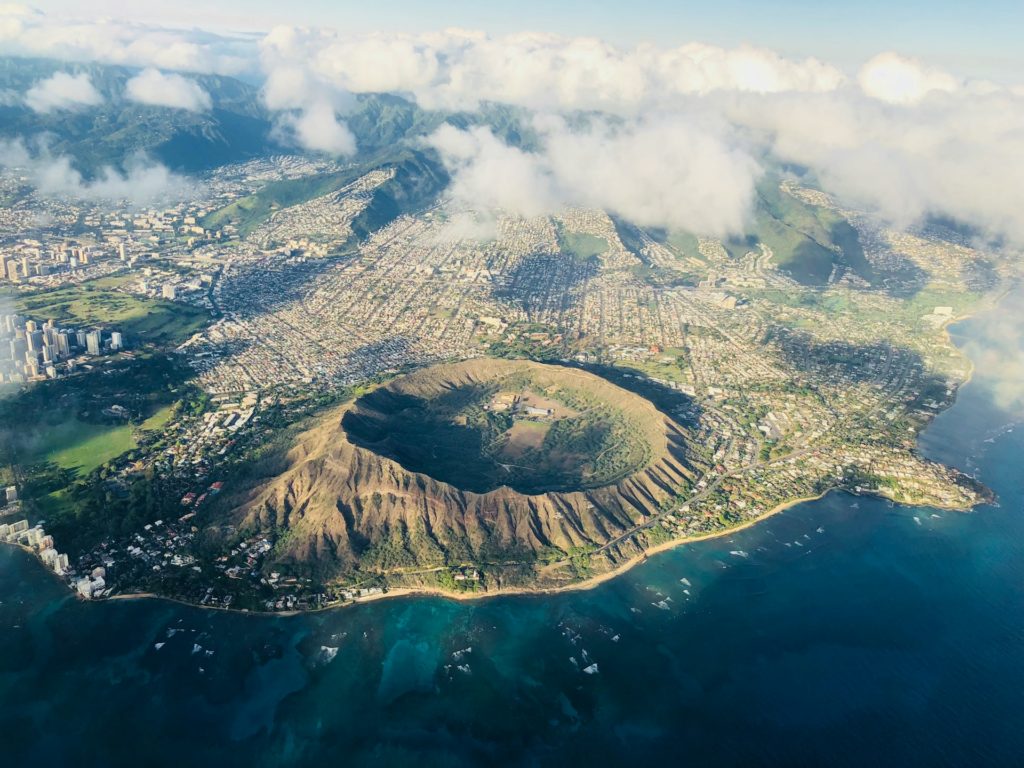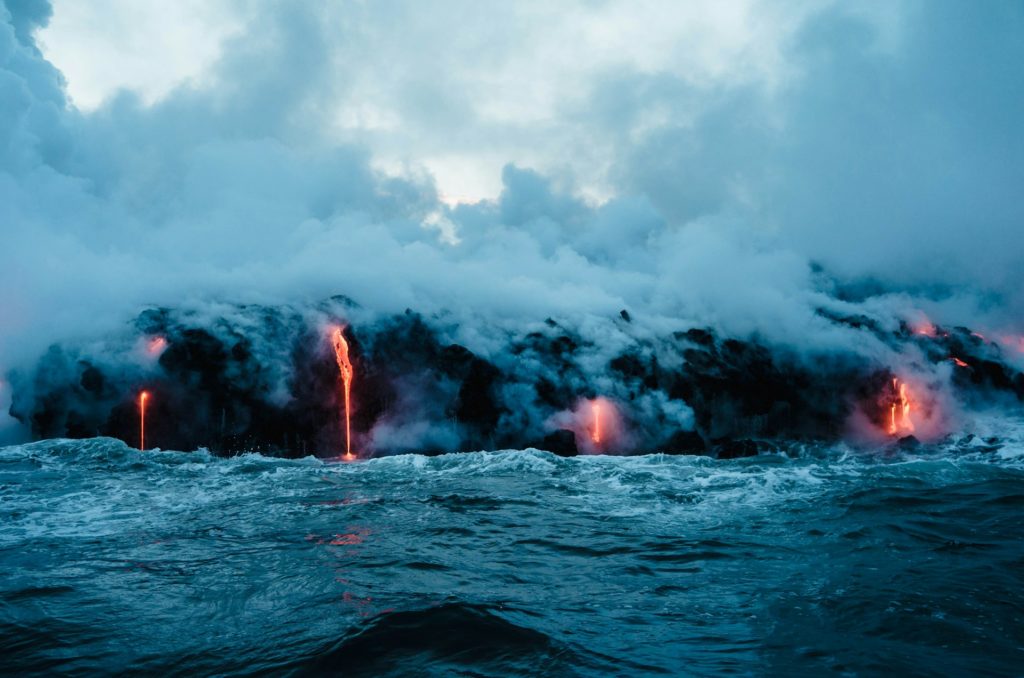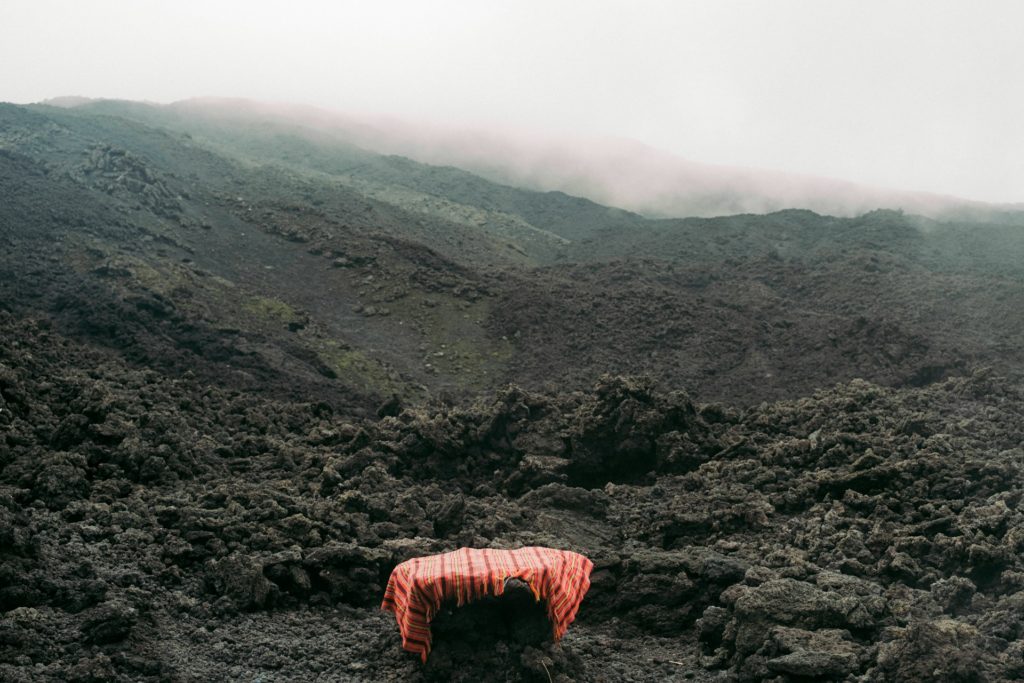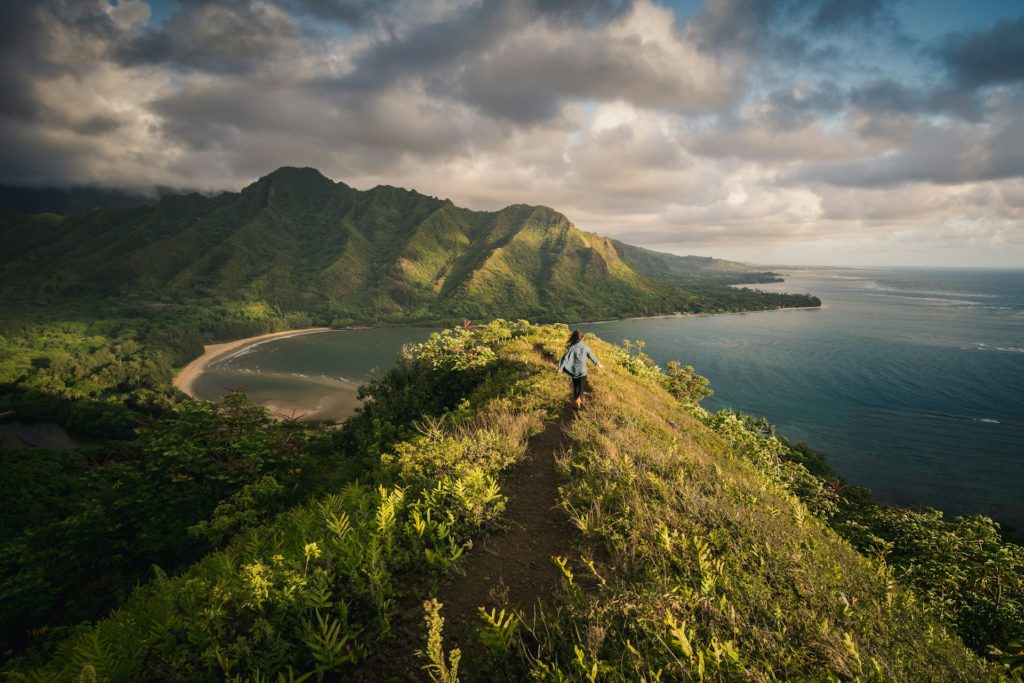The Big Island of Hawaii, a land sculpted by the forces of nature, is home to no fewer than five volcanoes, each contributing to the island’s diverse topography and rich geological history. These Hawaiian volcanoes, from the submerged Mahukona Volcano to the frequently erupting Kilauea, offer a unique glimpse into the Earth’s fiery interior.
In the following sections, we will explore each of the Big Island’s volcanoes, from the oldest to the youngest, delving into their characteristics, histories, and the roles they play in both the natural environment and Hawaiian culture. Whether you’re a curious traveler or an avid geology enthusiast, this guide will provide you with a comprehensive understanding of Hawaii’s volcanic wonders.
How Many Volcanoes Are on the Big Island of Hawaii
The Big Island of Hawaii boasts six primary volcanoes that have shaped its terrain and ecosystem, encompassing both active and dormant giants. These geological formations include the extinct Kohala Volcano, and the four active or dormant contributors: Mauna Kea, Mauna Loa, Hualalai Volcano, and the notably active Kilauea. Each of these volcanoes has played a pivotal role in forming the Big Island as we know it today.
The volcanoes on the Big Island ranges include the sea cliffs formed by the ancient Kohala Volcano and the dynamic flows from the continuously erupting Kilauea since 1983. This progression from past to present volcanic activity tells the story of the island’s growth and transformation.

The Five Well-Known Volcanoes of Hawaii’s Big Island
The Big Island of Hawaii is famed for its five well-known volcanoes, each of these volcanic giants has uniquely influenced the island’s geography and culture. These volcanoes of the Big Island are central to the island’s story, their echoes felt in every crevice and valley.
1. Kilauea – The Most Active Volcano on Earth
Kilauea is not only one of the most active volcanoes in the world but also one of the most closely monitored. Between 1983 and 2018, Kilauea’s persistent activity reshaped the surrounding landscape, offering a dramatic spectacle of nature’s power. Visitors to the Hawaii Volcanoes National Park can witness the aftermath of these historic flows and, depending on current volcanic activity, may even see fresh lava making its inexorable journey to the sea.
While visiting the park, you can explore the trails around Kilauea, stopping by the visitor center for the latest updates on volcanic activity. The park provides opportunities to safely observe the forces that continue to mold the Big Island, whether it’s through the steam vents, the hardened lava fields, or the stunning view into the caldera itself. It’s a reminder of the Earth’s ever-changing nature and the raw beauty of creation in progress.
2. Mauna Loa – The Colossal Giant
Mauna Loa, known as the largest volcano on earth by mass and volume, defines the southern skyline of the Big Island. This shield volcano’s expansive reach is evident in the vast, gentle slopes that descend from its summit, offering breathtaking vistas that capture the essence of Hawaii’s volcanic landscape. Although currently dormant, Mauna Loa’s size and history are a testament to the powerful forces at work beneath the island’s surface.
Visitors to the Hawaii Volcanoes National Park can gain a deeper appreciation for this colossal giant, reflecting on the many eruptions that have contributed to its grandeur throughout Hawaiian history. The park’s trails and overlooks allow you to immerse yourself in the awe-inspiring scale of Mauna Loa, providing a unique vantage point from which to contemplate the island’s formation and the might of the Earth’s geology.
3. Mauna Kea – The Sky-High Dormant Volcano
Mauna Kea stands as a towering sentinel over the Big Island, its peak rising high above the ocean floor. This dormant volcano last experienced a summit eruption thousands of years ago, and its serene landscape now hosts world-renowned astronomical observatories that seek to unlock the mysteries of the universe. Mauna Kea’s height and clarity of skies make it an ideal location for stargazing and scientific discovery.
For the native Hawaiian community, Mauna Kea holds a special significance, woven into the fabric of their cultural heritage. The mountain’s quiet grandeur and the sacred Lake Waiau near its summit are integral to the island’s spiritual landscape. Visitors can explore Mauna Kea’s slopes, where the boundary between earth and sky seems to blur, and one can truly appreciate why it is revered as one of the most majestic volcanoes in Hawaii.
4. Hualalai – The Protective Shield of Kona’s Coffee Belt
Hualalai Volcano, geologically speaking, is among the youngest volcanoes on the Big Island, yet it stands as a guardian over the cherished Kona coffee region. Its last eruption occurred centuries ago, and today, Hualalai’s presence is felt more benignly, influencing the soil richness that supports the lush coffee plantations. The volcano’s slopes and craters provide a scenic backdrop to this tropical paradise.
While the volcano slumbers, the area around Hualalai remains vibrant with life, from the bustling activity at Kona International Airport to the serene resorts nestled on its flanks. Beneath the surface, however, the volcano’s potential for future activity is carefully monitored, ensuring that this protective shield of Kona continues to be a source of natural beauty and economic prosperity for the island.
5. Kohala – The Ancient and Weathered Peak
Kohala, the oldest volcano on the island, has long been dormant, its once fiery heart now quieted by the passage of a million years. Its legacy is etched in the dramatic sea cliffs and verdant valleys that characterize the northern reaches of the Big Island. As the first volcano in the Hawaiian chain to emerge from the Pacific Ocean, Kohala’s weathered form speaks to the island’s ancient origins and the powerful geological forces that continue to shape its destiny.
Today’s Kohala is a landscape of history and natural splendor, its past erupts as a distant memory as evidenced by the magnetism recorded in its rocks. The region invites exploration, from the deep valleys carved by water and time to the high points that offer sweeping views of the land and sea. Kohala’s terrain is a testament to the volcanic activity that has long since passed but whose influence is ever-present in the island’s story.

Understanding Hawaii’s Volcanic Landscape
Within the lush, vibrant vistas of the Big Island lies the indelible mark of Kilauea Volcano, an active centerpiece of Hawaii’s volcanic landscape. The island’s beauty is a direct result of the dynamic processes that continually sculpt and refine its terrain, making it a living showcase of Earth’s natural creativity.
The Formation of the Hawaiian Island Chain
The Hawaiian Island chain owes its existence to a volcanic hotspot, a plume of molten rock deep within the Earth’s mantle that has created an archipelago stretching across the Pacific Ocean. Scientists estimate that the hotspot has been active for tens of millions of years, with the older islands like the Gardner Pinnacles giving way to the younger, still-active volcanoes of the Big Island.
As the Pacific Plate moves over this hotspot, new islands are formed, and shield volcanoes like Kilauea rise from the ocean floor, adding to the chain. This geological process has crafted a diverse array of islands, each with its unique volcanic history, contributing to the rich tapestry that makes up the Hawaiian archipelago.
Characteristics of Hawaiian Volcanoes
Hawaiian volcanoes are renowned for their shield-like profiles, a result of the fluid lava flows that emanate from their summits and rift zones. These gentle slopes allow the lava to travel great distances, creating the broad, dome-shaped mountains that distinguish the Hawaiian landscape. The composition of the lava also contributes to the distinct, non-explosive eruptions that are a hallmark of the volcanoes on the Big Island.
Hawaii Volcanoes National Park – A Hub of Volcanic Activity
Hawaii Volcanoes National Park serves as a living laboratory where visitors can witness the power of Kilauea and the other volcanoes that shape the Big Island. At the heart of the park lies the Kilauea caldera, a vast depression formed by the collapse of the volcano’s summit chamber, offering a window into the ongoing processes that drive volcanic activity.
Notable Eruptions and Historical Significance
Among the most significant volcanic features on the Big Island is the Halemaʻumaʻu crater, located within the Kilauea caldera. This site has been the focal point of numerous eruptions and holds great historical and cultural importance. The continuous activity within the crater serves as a reminder of Kilauea’s status as one of the most active volcanoes on the planet.
Navigating the Volcanic Terrain
Whether you’re marveling at the fresh flows of molten rock or exploring the older, weathered paths, the Big Island offers a unique and powerful reminder of nature’s relentless creativity.
Sustainable Adventures – Trekking Amongst Giants
Sustainable adventures in Hawaii means respectfully communing with the island’s natural wonders. The Big Island’s trails wind through diverse ecosystems, leading to breathtaking vistas and intimate encounters with ancient geological formations. Trekking amongst these volcanic giants, it’s essential to practice leave-no-trace ethics, ensuring that the beauty and integrity of the land remain for future generations to experience.
Hiking Trails and Safety Tips
When venturing onto the slopes of the Hualalai volcano, the vistas of the Kona coast unfold in breathtaking splendor. Alongside the stunning views, hikers can discover the island’s intricate network of lava tubes and fissures. While many areas of the Hualalai volcano are private, accessible trails on the lower slopes offer opportunities to explore without disturbing these protected lands.
Being aware of weather changes and volcanic activity is crucial, as conditions can shift rapidly. Always check for updates before setting out, ensuring a safe return from the heart of Hawaii’s volcanic wonderland.
Essential Tips for Experiencing Hawaii’s Volcanoes
To fully appreciate the grandeur of Hawaii’s volcanoes, it’s important to understand their diverse personalities. While Kilauea frequently steals the spotlight with its active eruptions, the less-famous Hualalai and the vast Mauna Loa, with its historic eruption in 1984, offer equally compelling narratives. Keep an eye on current volcanic activity, as conditions can change rapidly, and some areas may be restricted for safety.
Recommended Tours and Educational Programs
Exploring the Big Island’s volcanoes can be an unforgettable experience when guided by knowledgeable professionals. Companies like Kailani Tours offer expertly curated adventures that delve into the heart of Hawaii’s geological marvels. These tours provide a deep dive into the ancient landscapes, allowing you to witness the power of Kilauea firsthand and learn about the island’s volcanic history and its impact on the local ecosystem.

Final Thoughts
The Big Island of Hawaii, with its unique landscape shaped by the forces of nature, presents an extraordinary portion of the island that continues to grow as new land emerges from the sea. This dynamic environment is home to five major volcanoes, each with its own story, from the vigorously active Kilauea to the ancient Kohala, which has long stopped erupting.
So, whether you’re hiking the trails of Hawaii Volcanoes National Park or simply enjoying the view from afar, the presence of these titans reminds us of the planet’s incredible ability to create and transform. The Big Island’s volcanic legacy is an integral part of its allure, inviting travelers to experience the majesty and mystery of Hawaii’s natural wonders.
